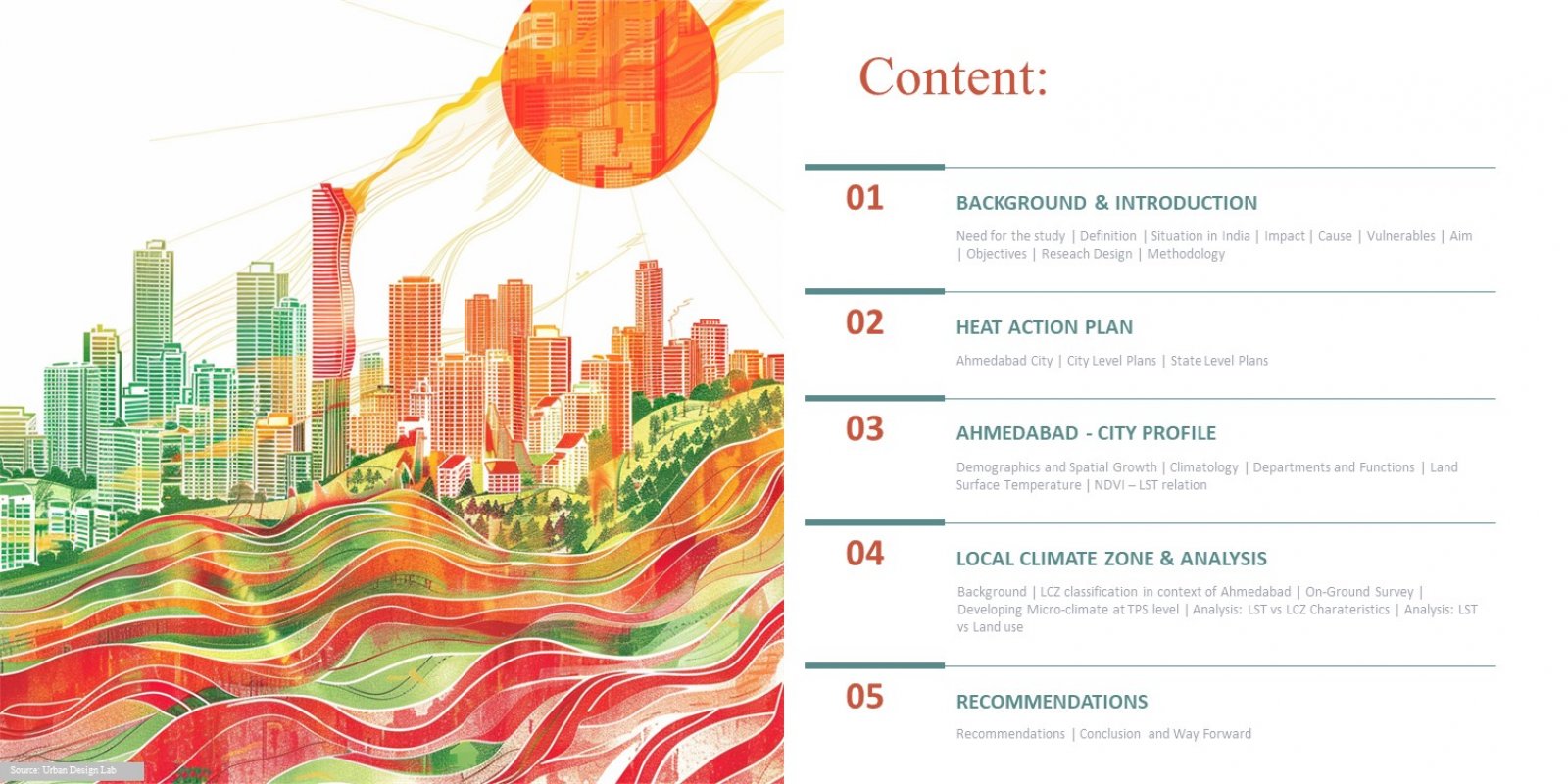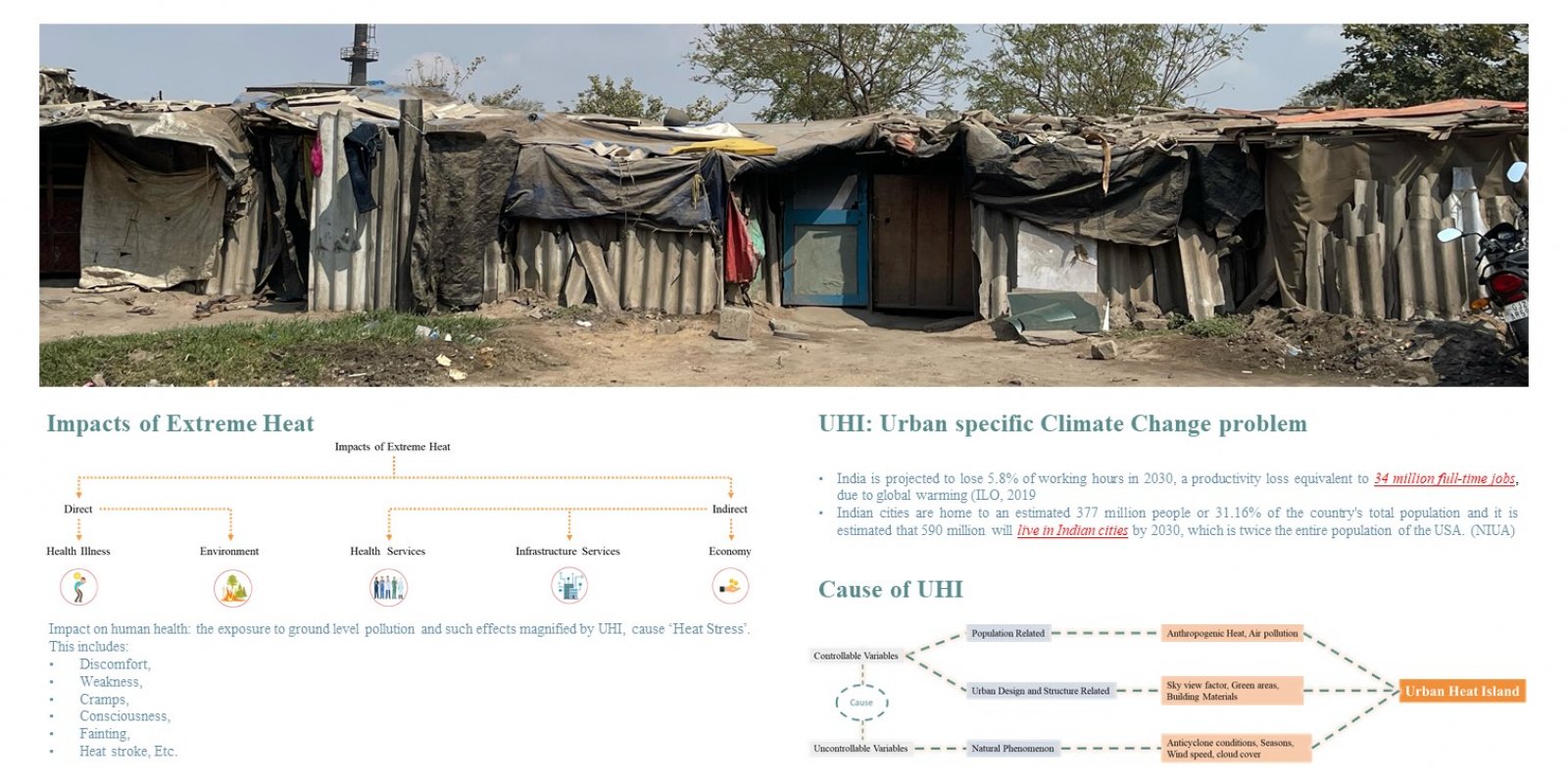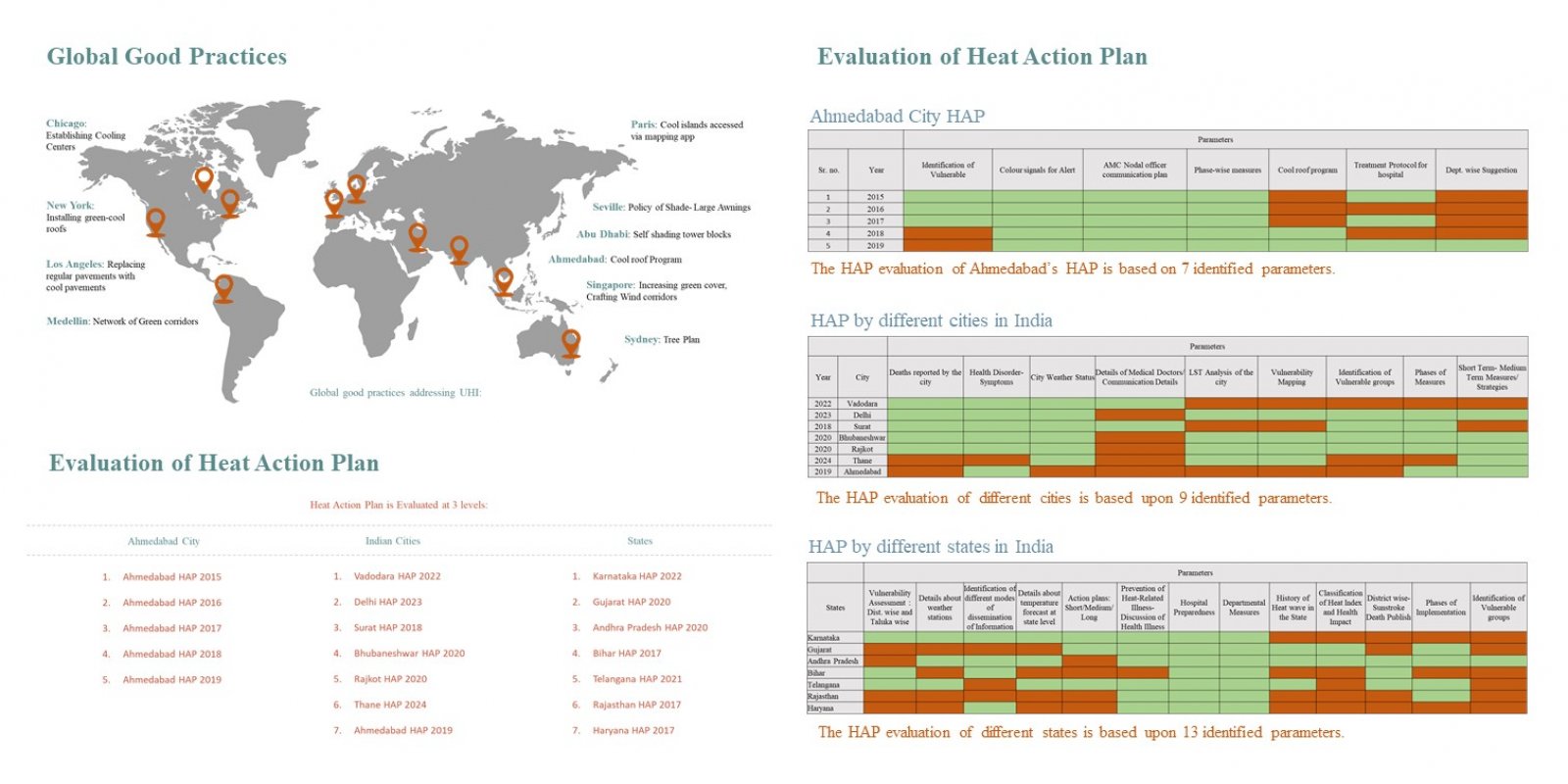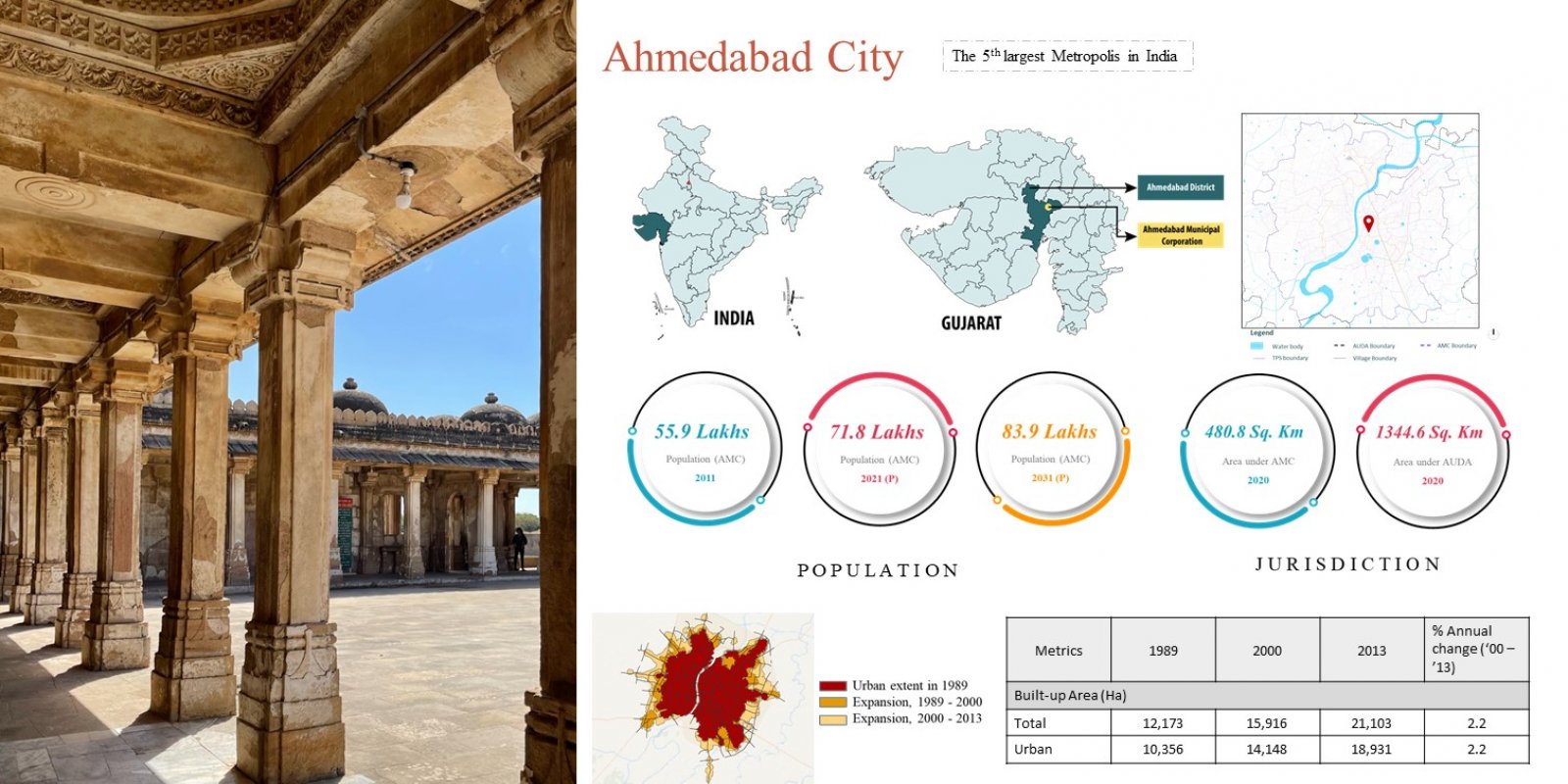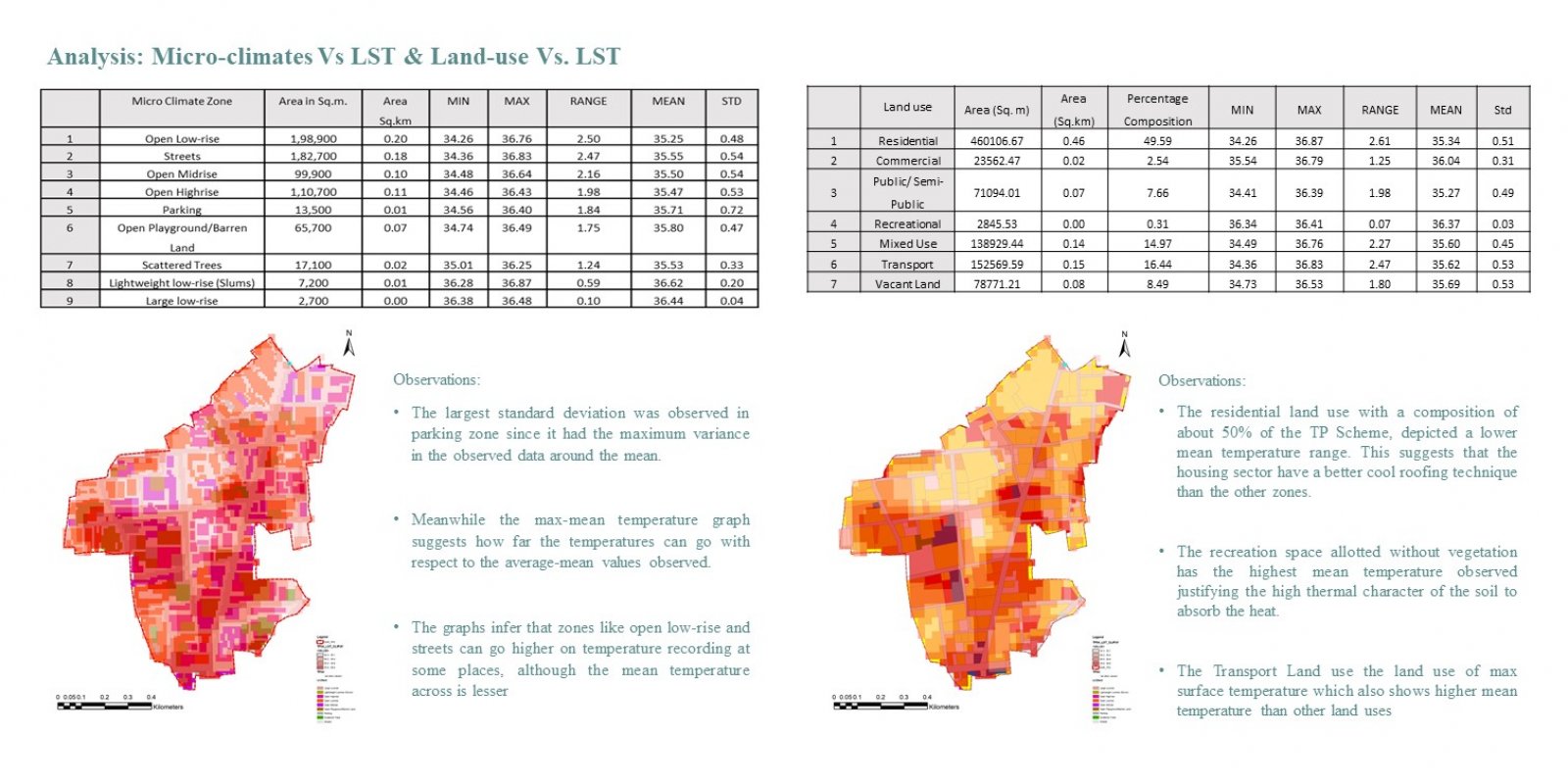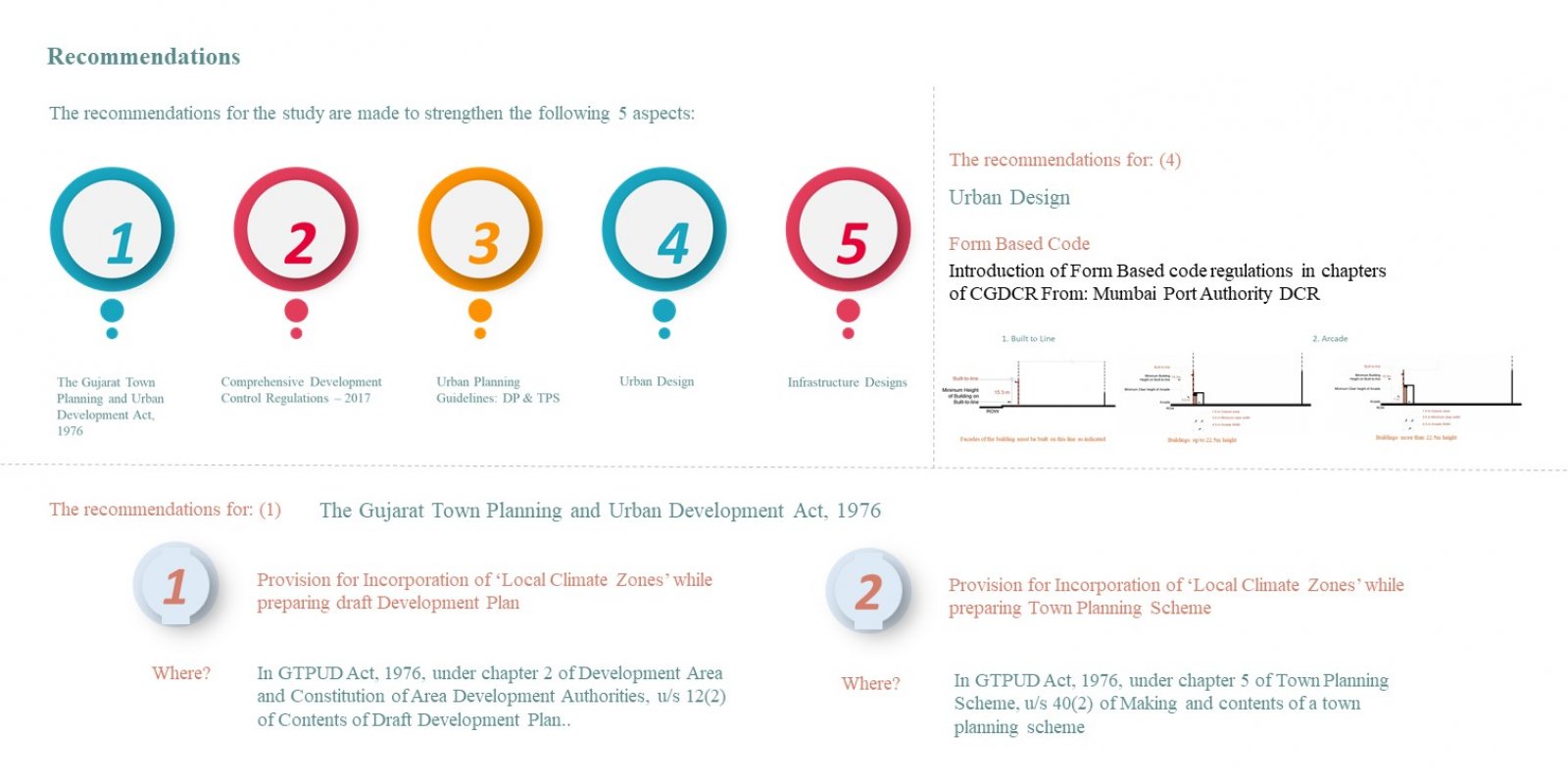Your browser is out-of-date!
For a richer surfing experience on our website, please update your browser. Update my browser now!
For a richer surfing experience on our website, please update your browser. Update my browser now!
Indian cities are on the fore front of human-induced effects of climate change. Year 2023, was the hottest year on records. These climate projections are likely to intensify, spread more geographically and occur more frequently. In response, many Indian cities have initiated the preparation of Climate Action Plans or heat Action plans as a strategic planning document but without many linkages with the statutory planning processes. The study analysis the various micro-climates at TPS level in Ahmedabad city by developing Local Climate Zones using WUDAPT tool, to understand the response of built characteristics and the thermal environment around it.
View Additional Work